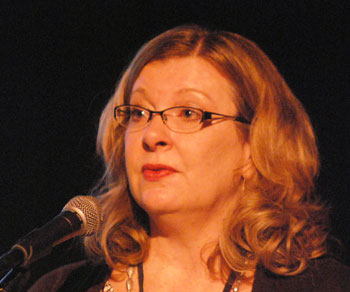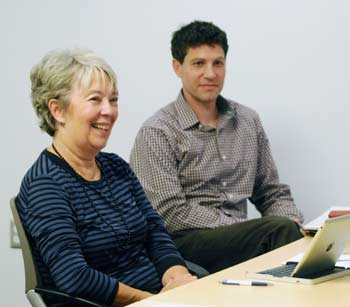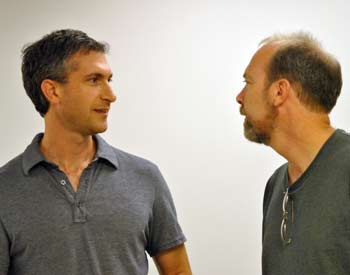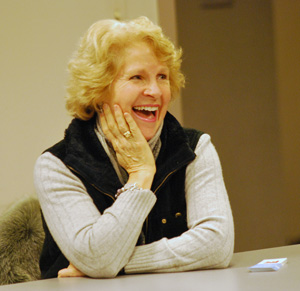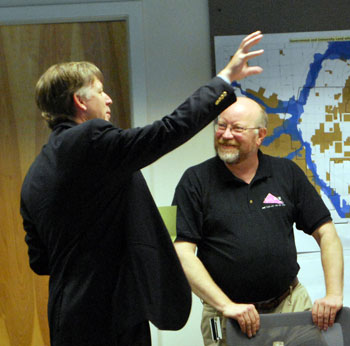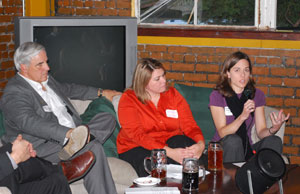Local Candidates Sketch Views on the Arts
Editor’s note: The candidate forum was moderated by the writer, Chronicle publisher Mary Morgan.
Twenty candidates for political office attended a forum hosted by the Arts Alliance on July 23, held at the Michigan Theater in downtown Ann Arbor and focused on the creative sector.
The event included presentations by each candidate as well as opportunities for questions from the audience, and drew out policy positions related to the arts.
County-level candidates shared their thoughts on the possibility of a countywide arts millage.
And mayoral candidate Sally Petersen took the occasion to float the idea of an Ann Arbor city income tax as an approach that would generate more revenue, at the same time shifting some of the burden of local government funding to those who work in Ann Arbor but do not live here.
Bryan Kelly, independent candidate for mayor of Ann Arbor in the Nov. 4 general election, made his first public appearance since qualifying for the ballot. “I can say firsthand that being an artist is the toughest damn job in the world. I’d rather run for mayor than keep writing novels,” he quipped.
Ypsilanti mayoral candidate Tyrone Bridges shared an example of his daughter’s artwork with forum attendees.
Favorite public art named by the candidates included the mosaic adorning the Fourth and Washington parking structure, as well as the half-mile of daffodils planted in The Arb.
And Ann Arbor Ward 5 incumbent Chuck Warpehoski delivered his opening statement in the form of a rap.
In her remarks at the end of the forum, Arts Alliance executive director Deb Polich urged candidates and elected officials to tap into the experts who know the creative sector. She encouraged candidates to touch base with ArtServe Michigan and the Arts Alliance to get accurate information. Ann Arbor is losing ground to other communities like Grand Rapids and Detroit, she said, and that’s why public funding and investment in the arts is important. “Private funding is absolutely here in this county, but it’s not enough – there’s not enough.”
It’s not just about funding, however. Polich stressed the importance of public policy to make the city a fertile ground for the creative sector.
Polich reported that the Arts Alliance will be holding a statewide conference called Creative Convergence on March 19, 2015. Thought leaders from across the country, state and Washtenaw County will be coming to speak about these issues, she said.
This report focuses on state and local candidates, including the Ann Arbor mayoral and city council races, Washtenaw County commissioners, and state legislators. It also includes responses to a candidate survey distributed by the Arts Alliance prior to the forum. Not included here are statements by the two Congressional candidates who attended the forum: Democrat Debbie Dingell, who’s running in the primary against Raymond Mullins of Ypsilanti for the District 12 seat in the U.S. House of Representatives; and Republican Douglas Radcliffe North, who’s running against incumbent Republican Tim Walberg for the District 7 seat in the U.S. House.
The outcomes of many of the local races will be determined in the Aug. 5, 2014 Democratic primary elections, if no Republicans or independent candidates are running. More information about candidates can be found on the Washtenaw County elections division website. Check the Michigan Votes website to find out your polling location and view a sample ballot. [Full Story]




